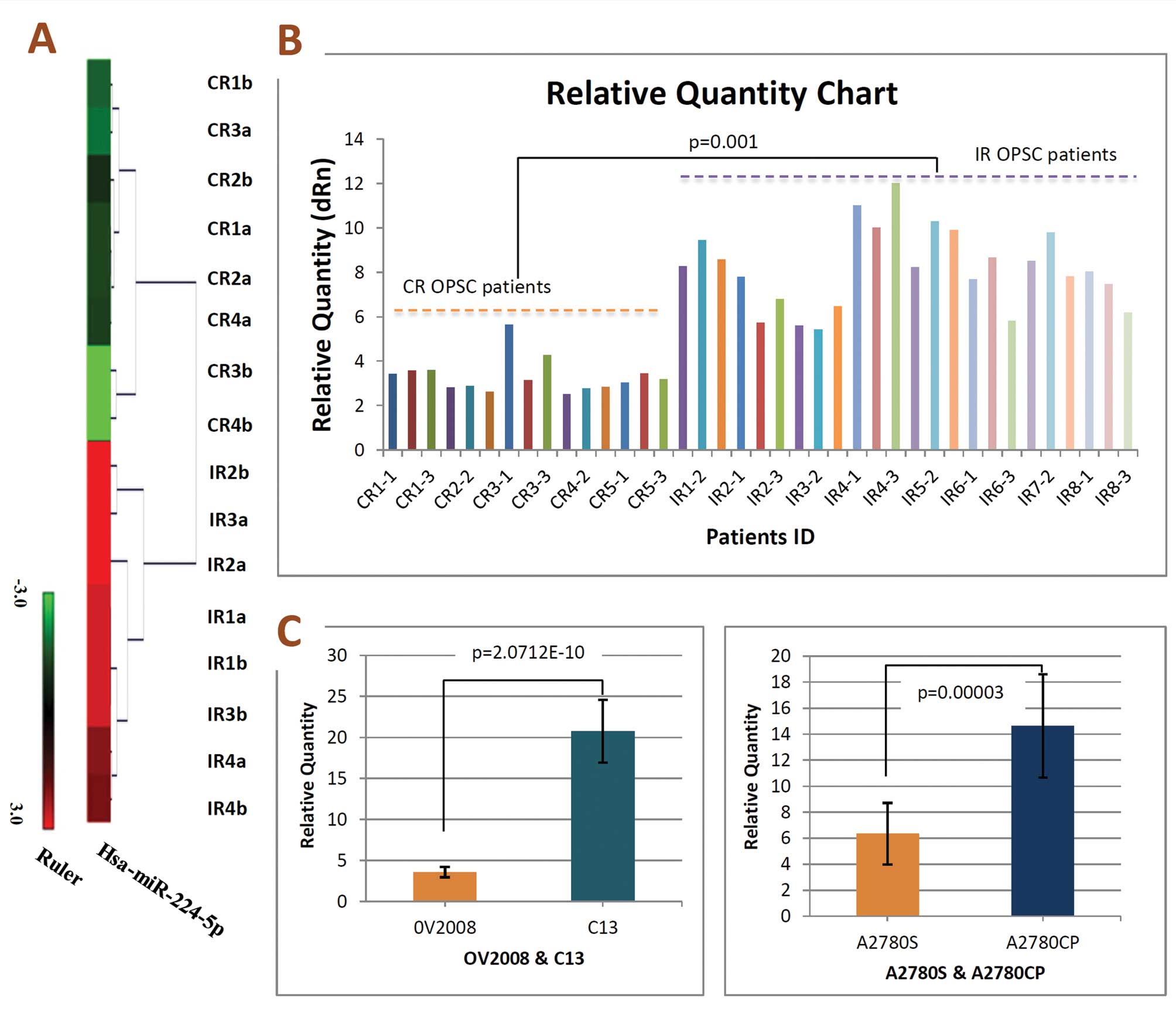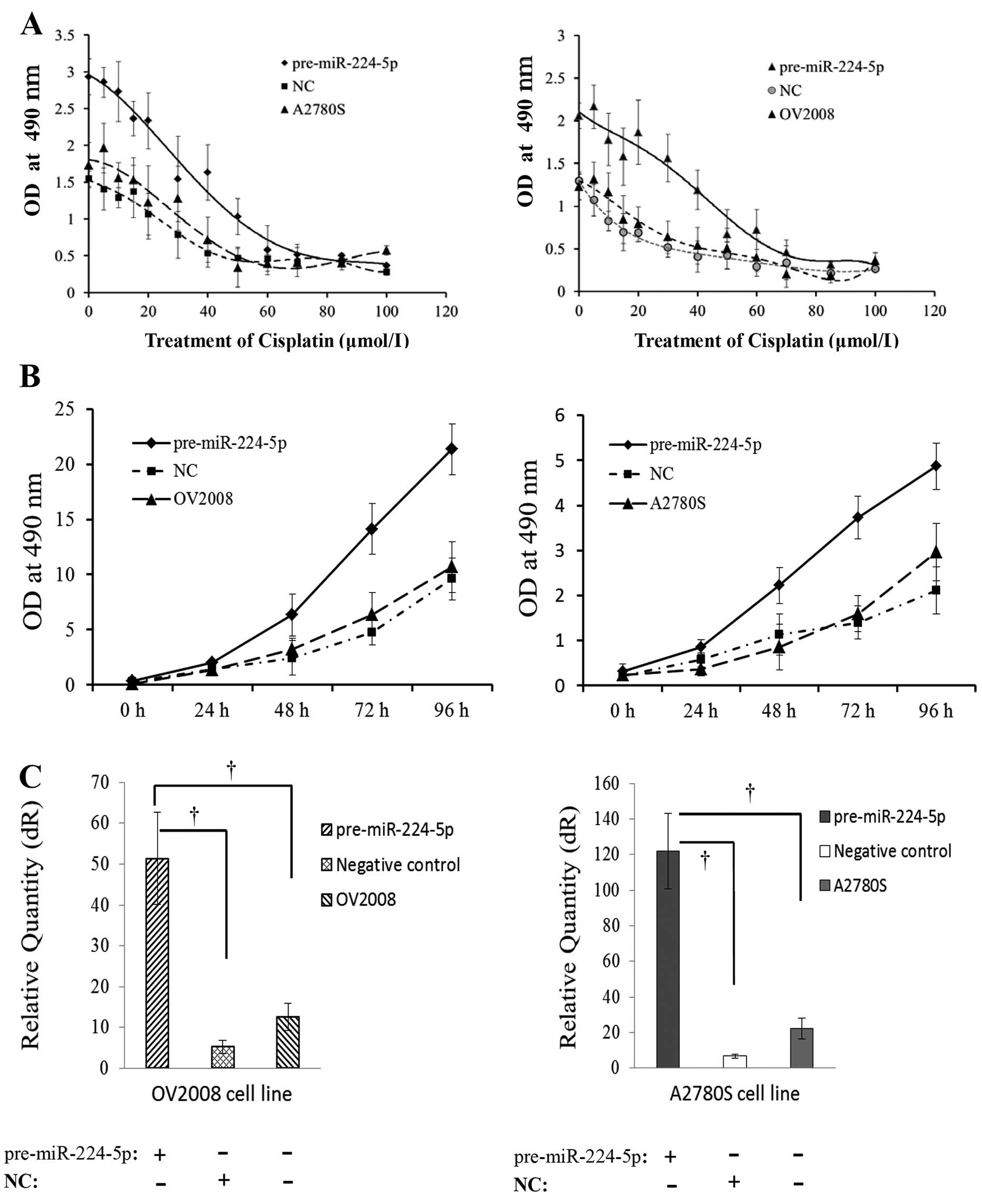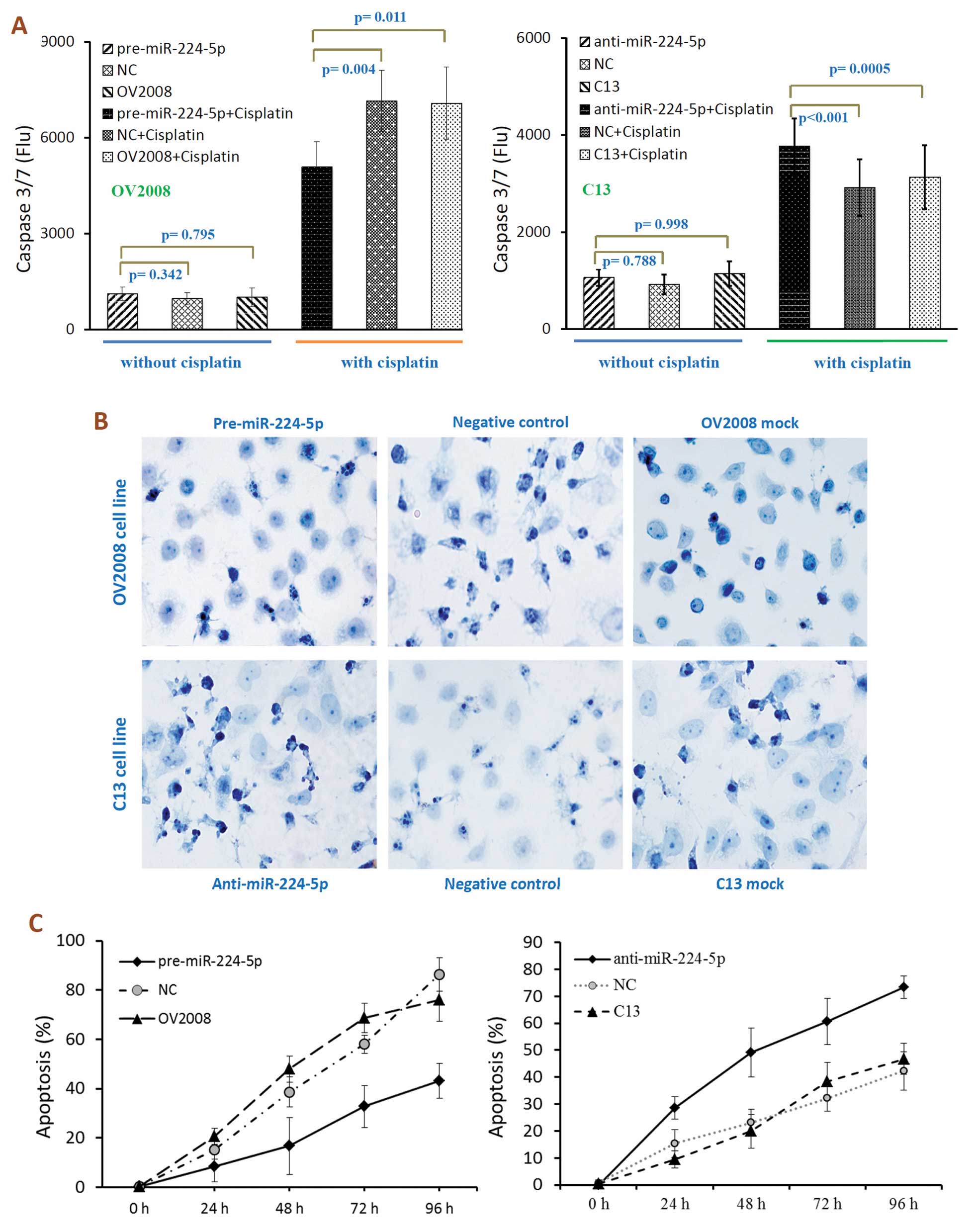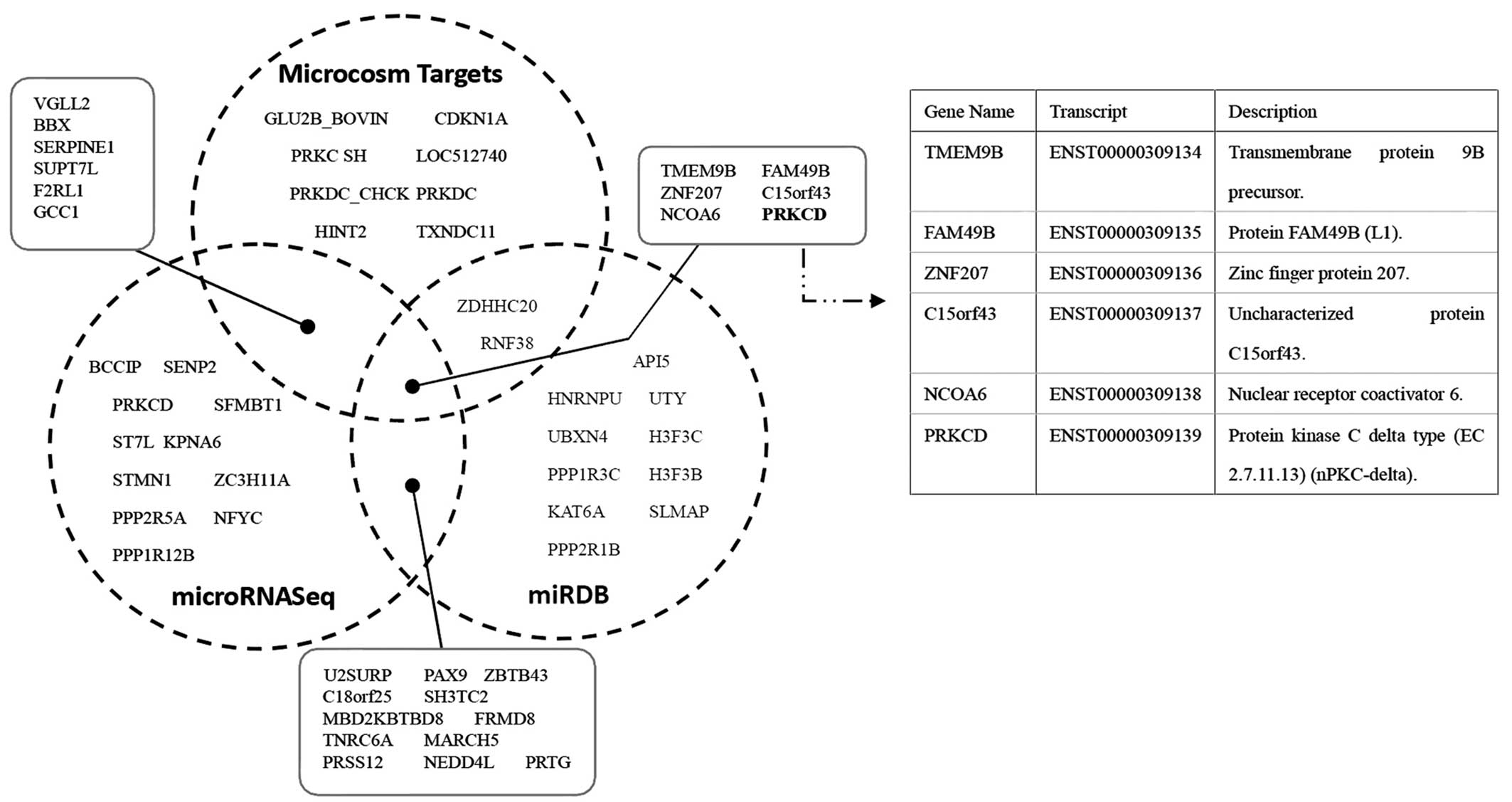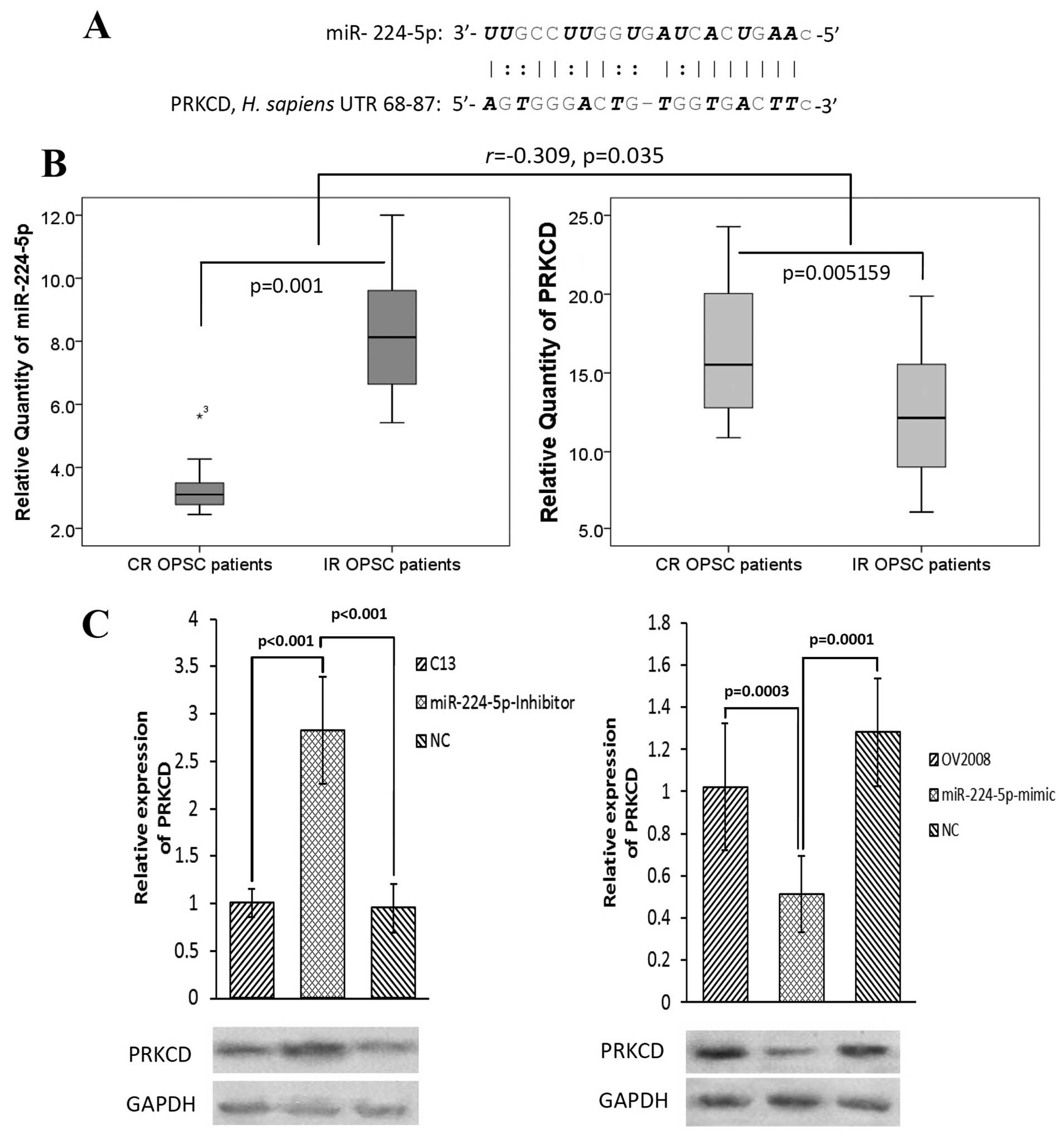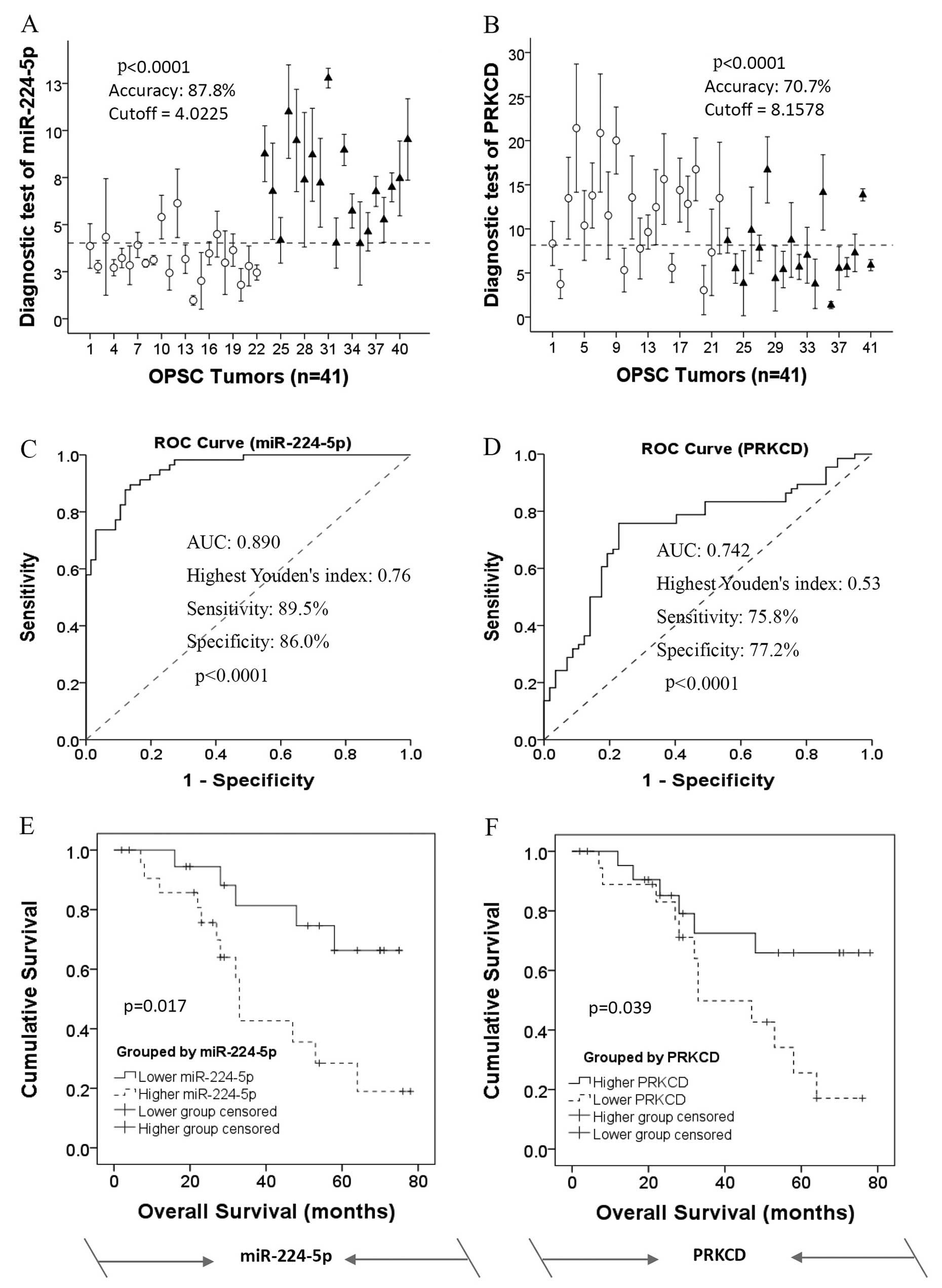|
1
|
Zhao H, Ding Y, Tie B, et al: miRNA
expression pattern associated with prognosis in elderly patients
with advanced OPSC and OCC. Int J Oncol. 43:839–849.
2013.PubMed/NCBI
|
|
2
|
Saldivar JS, Wu X, Follen M and Gershenson
D: Nucleotide excision repair pathway review I: implications in
ovarian cancer and platinum sensitivity. Gynecol Oncol. 107(Suppl
1): S56–S71. 2007. View Article : Google Scholar : PubMed/NCBI
|
|
3
|
Sorrentino A, Liu CG, Addario A, Peschle
C, Scambia G and Ferlini C: Role of microRNAs in drug-resistant
ovarian cancer cells. Gynecol Oncol. 111:478–486. 2008. View Article : Google Scholar : PubMed/NCBI
|
|
4
|
Chen Y, Ke G, Han D, Liang S, Yang G and
Wu X: MicroRNA-181a enhances the chemoresistance of human cervical
squamous cell carcinoma to cisplatin by targeting PRKCD. Exp Cell
Res. 320:12–20. 2014. View Article : Google Scholar : PubMed/NCBI
|
|
5
|
Zhang W, Dahlberg JE and Tam W: MicroRNAs
in tumorigenesis: a primer. Am J Pathol. 171:728–738. 2007.
View Article : Google Scholar : PubMed/NCBI
|
|
6
|
Kent OA and Mendell JT: A small piece in
the cancer puzzle: microRNAs as tumor suppressors and oncogenes.
Oncogene. 25:6188–6196. 2006. View Article : Google Scholar : PubMed/NCBI
|
|
7
|
Li Z, Hu S, Wang J, et al: MiR-27a
modulates MDR1/P-glycoprotein expression by targeting HIPK2 in
human ovarian cancer cells. Gynecol Oncol. 119:125–130. 2010.
View Article : Google Scholar : PubMed/NCBI
|
|
8
|
Duttagupta R, DiRienzo S, Jiang R, et al:
Genome-wide maps of circulating miRNA biomarkers for ulcerative
colitis. PLoS One. 7:e312412012. View Article : Google Scholar : PubMed/NCBI
|
|
9
|
Metzeler KH, Maharry K, Radmacher MD, et
al: TET2 mutations improve the new European LeukemiaNet risk
classification of acute myeloid leukemia: a cancer and leukemia
group B study. J Clin Oncol. 29:1373–1381. 2011. View Article : Google Scholar
|
|
10
|
Enerly E, Steinfeld I, Kleivi K, et al:
miRNA-mRNA integrated analysis reveals roles for miRNAs in primary
breast tumors. PLoS One. 6:e169152011. View Article : Google Scholar : PubMed/NCBI
|
|
11
|
Powers MP, Alvarez K, Kim HJ and Monzon
FA: Molecular classification of adult renal epithelial neoplasms
using microRNA expression and virtual karyotyping. Diagn Mol
Pathol. 20:63–70. 2011. View Article : Google Scholar
|
|
12
|
Bansal N, Marchion DC, Bicaku E, et al:
BCL2 antagonist of cell death kinases, phosphatases, and ovarian
cancer sensitivity to cisplatin. J Gynecol Oncol. 23:35–42. 2012.
View Article : Google Scholar : PubMed/NCBI
|
|
13
|
Miller AB, Hoogstraten B, Staquet M and
Winkler A: Reporting results of cancer treatment. Cancer.
47:207–214. 1981. View Article : Google Scholar : PubMed/NCBI
|
|
14
|
Rustin GJ, Nelstrop AE, Bentzen SM,
Piccart MJ and Bertelsen K: Use of tumour markers in monitoring the
course of ovarian cancer. Ann Oncol. 1:21–27. 1999. View Article : Google Scholar : PubMed/NCBI
|
|
15
|
Dressman HK, Berchuck A, Chan G, et al: An
integrated genomic-based approach to individualized treatment of
patients with advanced-stage ovarian cancer. J Clin Oncol.
25:517–525. 2007. View Article : Google Scholar : PubMed/NCBI
|
|
16
|
Giovannetti E, Erozenci A, Smit J, Danesi
R and Peters GJ: Molecular mechanisms underlying the role of
microRNAs (miRNAs) in anticancer drug resistance and implications
for clinical practice. Crit Rev Oncol Hematol. 81:103–122. 2012.
View Article : Google Scholar : PubMed/NCBI
|
|
17
|
Tian W, Chen J, He H and Deng Y: MicroRNAs
and drug resistance of breast cancer: basic evidence and clinical
applications. Clin Transl Oncol. 15:335–342. 2013. View Article : Google Scholar : PubMed/NCBI
|
|
18
|
Kanakkanthara A and Miller JH: MicroRNAs:
novel mediators of resistance to microtubule-targeting agents.
Cancer Treat Rev. 39:161–170. 2013. View Article : Google Scholar : PubMed/NCBI
|
|
19
|
Qamar L, Davis R, Anwar A and Behbakht K:
Protein kinase C inhibitor Gö6976 augments caffeine-induced
reversal of chemoresistance to
cis-diamminedichloroplatinum-II (CDDP) in a human ovarian
cancer model. Gynecol Oncol. 110:425–431. 2008.
|
|
20
|
Clark AS, West KA, Blumberg PM and Dennis
PA: Altered protein kinase C (PKC) isoforms in non-small cell lung
cancer cells: PKCδ promotes cellular survival and chemotherapeutic
resistance. Cancer Res. 63:780–786. 2003.
|
|
21
|
Sumitomo M, Asano T, Asakuma J, Asano T,
Nanus DM and Hayakawa M: Chemosensitization of androgen-independent
prostate cancer with neutral endopeptidase. Clin Cancer Res.
10:260–266. 2004. View Article : Google Scholar : PubMed/NCBI
|
|
22
|
Basu A and Akkaraju GR: Regulation of
caspase activation and
cis-diamminedichloroplatinum(II)-induced cell death by
protein kinase C. Biochemistry. 38:4245–4251. 1999.
|
|
23
|
Blass M, Kronfeld I, Kazimirsky G,
Blumberg PM and Brodie C: Tyrosine phosphorylation of protein
kinase Cδ is essential for its apoptotic effect in response to
etoposide. Mol Cell Biol. 22:182–195. 2002.
|
|
24
|
Basu A, Woolard MD and Johnson CL:
Involvement of protein kinase C-δ in DNA damage-induced apoptosis.
Cell Death Differ. 8:899–908. 2001.
|
|
25
|
Iioka Y, Mishima K, Azuma N, et al:
Overexpression of protein kinase Cδ enhances cisplatin-induced
cytotoxicity correlated with p53 in gastric cancer cell line.
Pathobiology. 72:152–159. 2005.
|
|
26
|
Basu A and Evans RW: Comparison of effects
of growth factors and protein kinase C activators on cellular
sensitivity to cis-diamminedichloroplatinum(II). Int J
Cancer. 58:587–591. 1994. View Article : Google Scholar : PubMed/NCBI
|
|
27
|
Gentilin E, Tagliati F, Filieri C, et al:
miR-26a plays an important role in cell cycle regulation in
ACTH-secreting pituitary adenomas by modulating protein kinase Cδ.
Endocrinology. 154:1690–1700. 2013.PubMed/NCBI
|
|
28
|
Hernández-Maqueda JG, Luna-Ulloa LB,
Santoyo-Ramos P, Castañeda-Patlán MC and Robles-Flores M: Protein
kinase C delta negatively modulates canonical Wnt pathway and cell
proliferation in colon tumor cell lines. PLoS One.
8:e585402013.PubMed/NCBI
|















